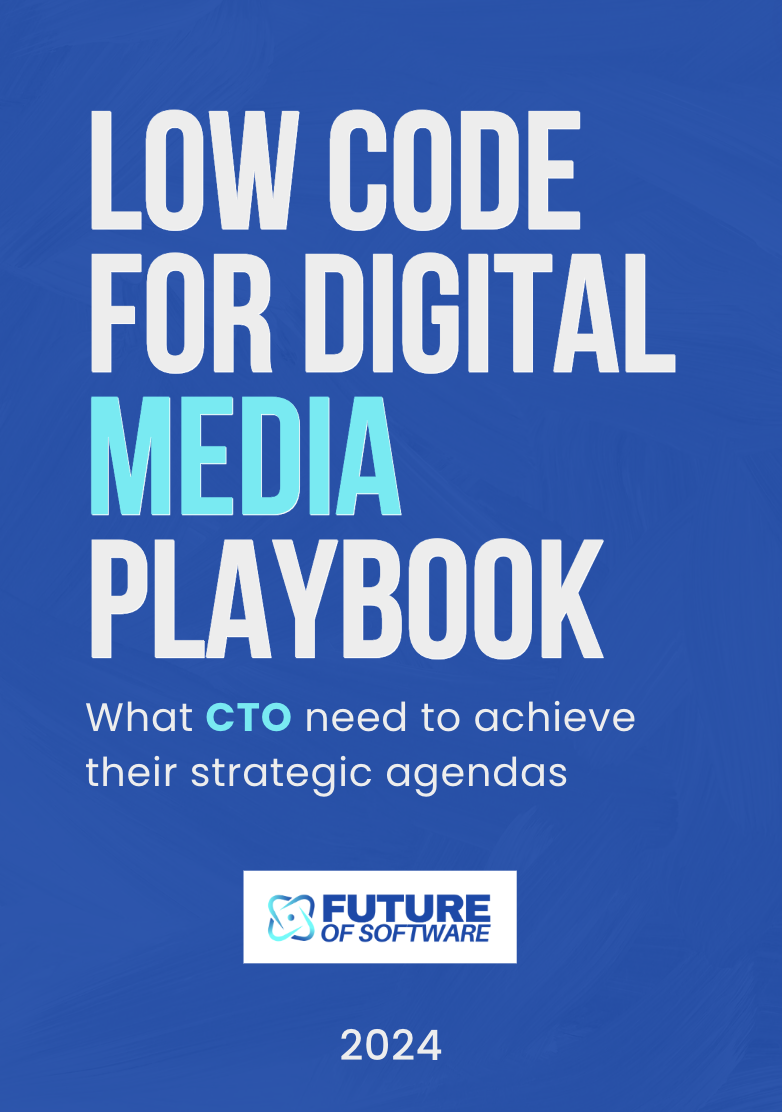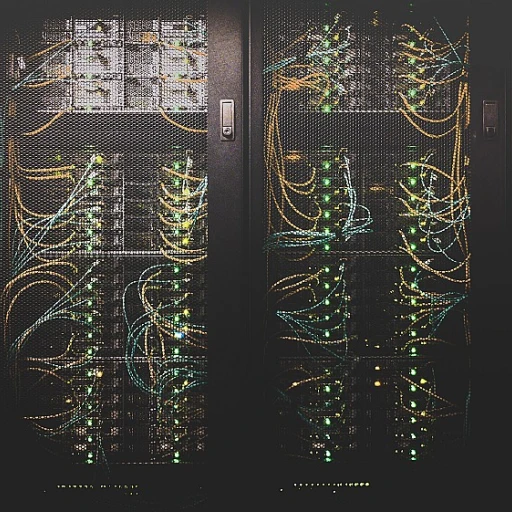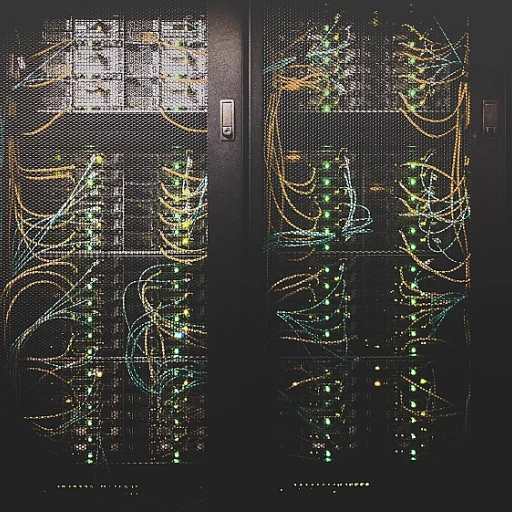
Understanding User-Centric Design
Putting Users First in Software Design
In today's fast-paced digital environment, people demand software that not only functions well but feels intuitive and personal. This is where the human centric approach comes in. We need to focus on design principles that place users at the center of the development process. It’s about connecting to human needs and creating digital experiences that people genuinely value. Here's the kicker: good design is not just about looks. It’s about making sure software feels natural and seamless to the user. The design thinking process is meant to make a product that users can relate to. Every tap, swipe, and click should have a purpose, ensuring that users can navigate without a hitch. User-centric design isn't just a trendy buzzword. It’s a business strategy. Companies that prioritize a human centered approach often see increased customer satisfaction, loyalty, and an edge over competitors. When a team creates centered software, they are investing in a process that considers the users' perspectives, driving a better user experience every time. The design process needs empathy at its core. It’s about stepping into the shoes of users, understanding their challenges, and crafting centric applications that feel like they were made just for them. As we move forward, embracing this human centric strategy can lead to more meaningful software development and help businesses reach new heights. Curious about how architecture of software is evolving alongside user-focused approaches? Dive deeper into the future of these developments by visiting here.The Role of Empathy in Software Development
Empathy: The Heartbeat of Design
In the world of software design, empathy is more than just a buzzword—it's the secret sauce that brings user-centric design to life. When software development teams put themselves in the shoes of users, they create products that truly resonate. It's about understanding the frustrations and needs of people who interact with digital products daily.
Take a moment to think about the last time you used an app that just 'got you.' That seamless experience didn't happen by accident. It was the result of developers and designers who took the time to understand what users want. They listened, they learned, and they delivered.
Empathy in Action: Real-World Examples
Consider the development process of a popular messaging app. The team behind it spent countless hours observing how users communicate, noting the little things that make conversations flow. They realized that quick access to emojis and gifs made chats more lively and fun. By empathizing with users, they designed a product that feels intuitive and engaging.
Another example is a ride-sharing app that prioritized the safety of its users. By understanding the concerns of both drivers and passengers, they implemented features like real-time tracking and emergency contacts. This human-centered approach not only enhanced user experience but also built trust in their services.
Building Empathy in Your Team
So, how do you cultivate empathy within your software development team? Start by encouraging open communication. Create an environment where team members feel comfortable sharing their thoughts and ideas. Encourage them to engage with users directly, gathering insights that can shape the design process.
Workshops and role-playing exercises can also be effective. By simulating user scenarios, team members can better understand the challenges users face. This hands-on approach fosters a deeper connection with the human aspect of software design.
The Bigger Picture: Empathy's Impact on Business
Empathy doesn't just benefit users; it's a game-changer for businesses too. When companies invest in understanding their users, they create products that stand out in a crowded market. User-centric applications lead to higher satisfaction, increased loyalty, and ultimately, a stronger bottom line.
Moreover, empathy-driven design can lead to innovative solutions that address real-world problems. By focusing on the human experience, businesses can develop services and systems that make a meaningful impact.
To learn more about how empathy is reshaping software development, check out this article on the future of software in remote work.
Incorporating Accessibility and Inclusivity
Prioritizing Accessibility and Celebrating Inclusivity
Creating solid, user-friendly software involves more than just clever coding; it centers around human-centered, empathetic design principles that include everyone. It's time to roll up the sleeves and explore why accessibility isn't just a kind gesture. It's an absolute necessity in today's software development scene. The design process should naturally integrate accessibility, placing users' unique experiences and needs at the forefront. Building a digital product that excludes any potential user isn’t just a business misstep. It can mean showing a lack of awareness. Consider this for a moment; you’re responsible for designing a new digital banking service. The team brainstorms ways they can enhance the user experience. Yet, they forget considering how visually or physically impaired users will interact with their shiny new service. The excitement for innovation can't overshadow basic accessibility guidelines. When software design actively embraces inclusive best practices, you ensure that products and services are open to all users of varying needs, abilities, and backgrounds. These human-centered values not only meet legal standards but also foster a welcoming environment where everyone can engage. So how do you move from pretty ideas to tangible action? You include it in your development process from day one. Talk to diverse users during early design thinking, inviting real feedback to your hcd products. Incorporate tools and methodologies that highlight accessibility, checking off those usability boxes while you’re at it. Exploring the future of user-centered software is both an art and a science. Tools like Airtable can help track resources effectively and support in maintaining focus on accessibility goals. And here's something more—don’t just take my word for it. Look into companies doing it right and learn from their stories. The five-star reviews and loyal users are rewards well-earned from a commitment to inclusive, centered design. Accessibility isn’t a burden. It's an opportunity to increase your business reach. Grab it with both hands and never let go. Let's set the bar higher, ensuring your software development process lights the way for a more inclusive future.Balancing Innovation with Usability
Finding the Sweet Spot Between Innovation and Usability
In the world of software design, it's easy to get swept up in the excitement of new technologies and groundbreaking features. But let's not forget that the best software is the kind that users can actually use. Balancing innovation with usability is like walking a tightrope, where one misstep can lead to a product that either confuses or frustrates users.
When a software development team embarks on creating a new product, the temptation to load it with the latest bells and whistles can be overwhelming. However, the heart of human-centered design (HCD) is about making sure the user experience (UX) remains intuitive and straightforward. After all, what's the point of having a cutting-edge feature if users can't figure out how to use it?
Consider the development process of a digital service like a music streaming app. While it's tempting to incorporate advanced AI-driven recommendations and social sharing features, the core functionality—playing music—should remain seamless and accessible. This is where design thinking comes into play, guiding teams to prioritize features that enhance the user experience without overshadowing basic usability.
Good design principles suggest that every innovation should serve a clear purpose and align with user needs. It's about understanding what users want and need, then delivering it in a way that feels natural. This often involves iterative testing and feedback loops, where real-world users provide insights that shape the final product.
Moreover, a business that invests in user-centered design is likely to see a return in customer loyalty and satisfaction. People are more inclined to stick with a product that feels like it was made for them, rather than one that feels like a tech demo. This approach not only benefits users but also positions the business as a leader in delivering centric applications that resonate with its audience.
In summary, the key to balancing innovation with usability lies in staying grounded in the principles of human-centered design. By focusing on what truly enhances the user experience, software development teams can create products that are both innovative and user-friendly, ensuring a successful and enduring product in the market.
The Impact of AI on User-Centric Design
AI's Influence on User-Centric Design
Artificial intelligence is no longer just a buzzword; it's reshaping how we think about user-centric software design. Imagine AI as that helpful friend who knows just what you need, even before you do. It's making software more intuitive, almost like it can read your mind. AI helps in predicting user behavior, which means software can adapt and personalize experiences in real-time. This leads to a more satisfying user experience, where everything feels just right.
But how does this magic happen? Well, AI analyzes tons of data about how people use software. It learns from patterns and adjusts the software to better meet user needs. For example, if you're always searching for the same features, AI can bring those to the forefront. It's like having a personal assistant that makes your digital life easier.
Human Touch in AI-Powered Design
While AI brings a lot to the table, the human touch is still vital. The best user-centric designs come from a blend of AI insights and human creativity. Software development teams use AI to gather data, but they rely on their own empathy and understanding to create designs that truly resonate with users. This combination ensures that software isn't just smart, but also relatable and human-centric.
Consider a team working on a new app. They use AI to analyze user feedback and identify common pain points. But it's their human-centered design approach that leads them to create features that users love. They listen to what people are saying, and they use that information to make the app more intuitive and enjoyable.
Balancing AI and Usability
There's always a balance to strike between innovation and usability. AI can suggest groundbreaking features, but if they confuse users, they miss the mark. The goal is to use AI to enhance the user experience without overwhelming people. This means keeping things simple and user-friendly, even as software becomes more advanced.
Think about a digital service that uses AI to offer personalized recommendations. If those recommendations are too complex or not relevant, users might feel frustrated. The challenge is to use AI to make the software feel like a natural extension of the user's own thought process. It's about creating a seamless experience where technology works with, not against, the user.





-large-teaser.webp)









